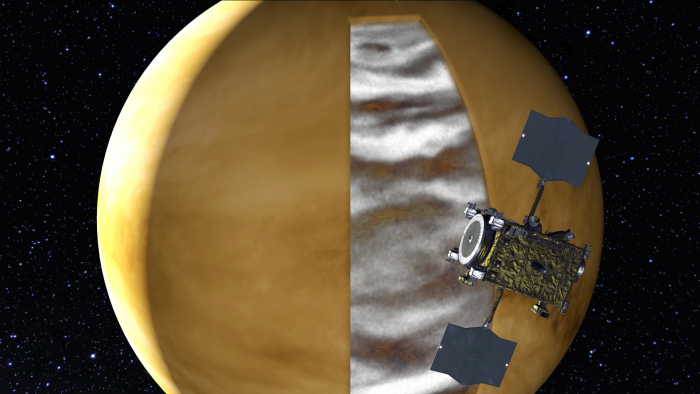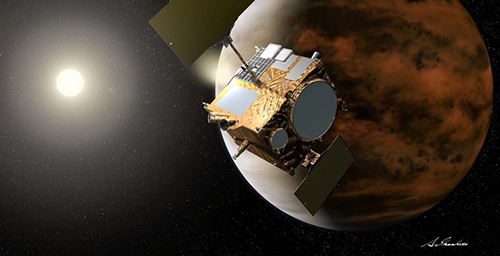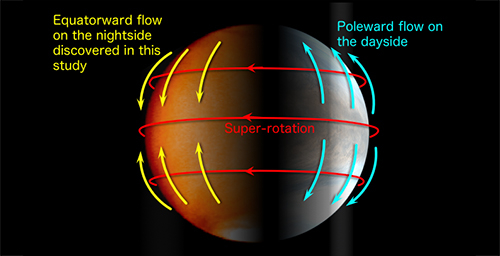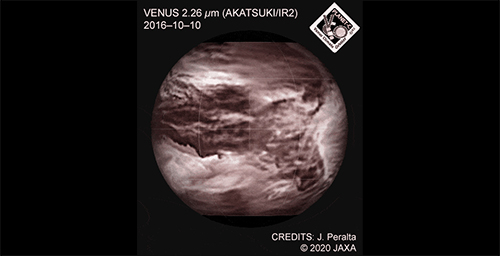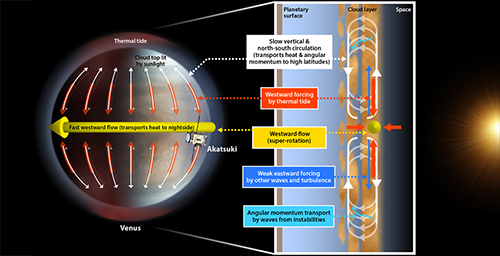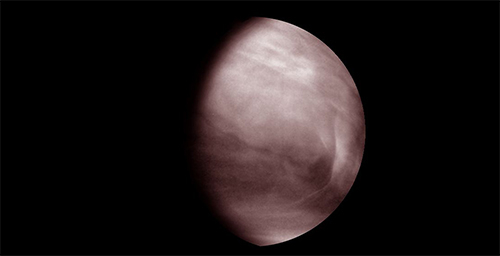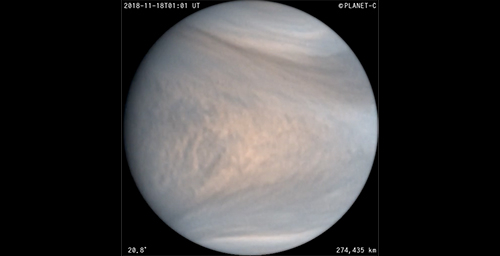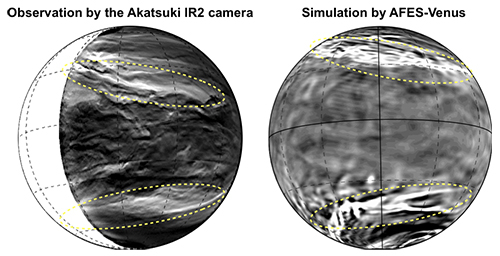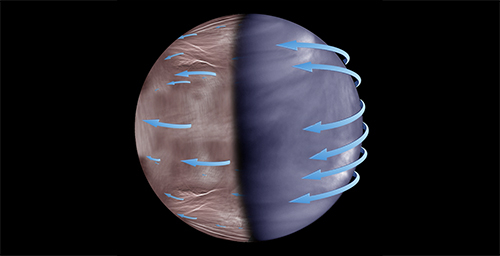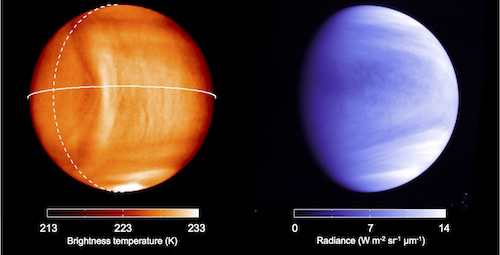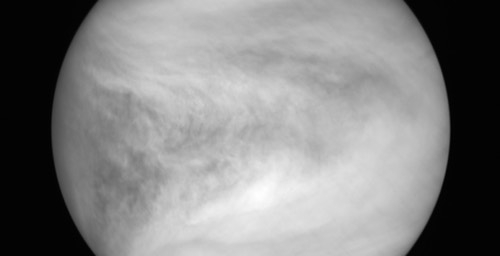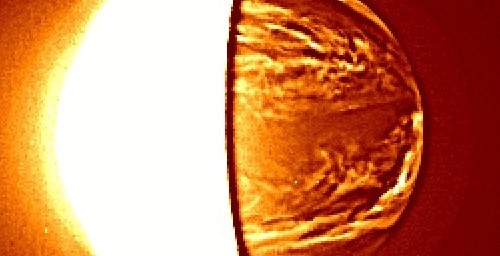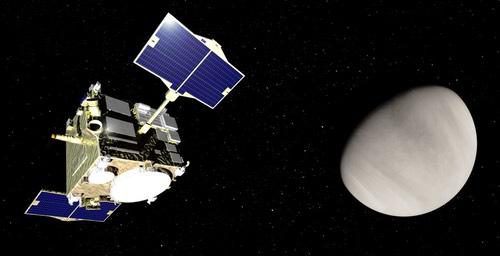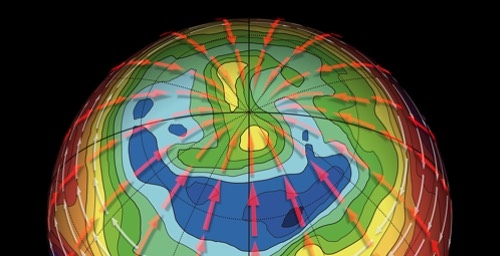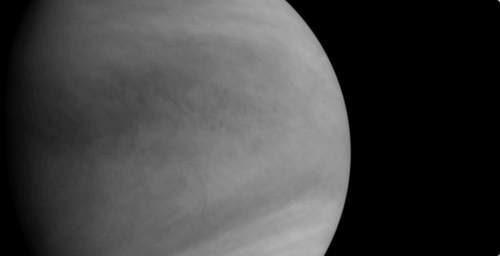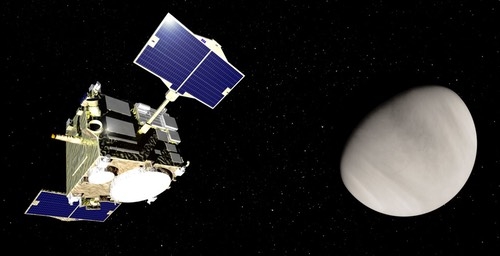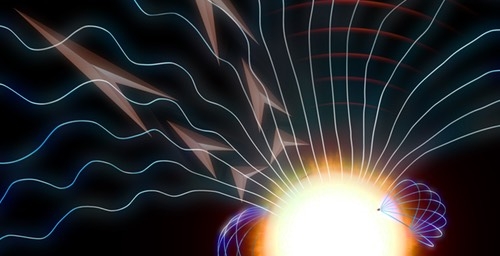Observations by Japan's Venus climate orbiter Akatsuki have revealed an equatorial jet in the lower to middle cloud layer of the planet's atmosphere, a finding that could be pivotal to unraveling a phenomenon called super-rotation. The results appear in Nature Geoscience.
Figure 1: Artificial rendering of Akatsuki's observations for the night side of Venus. Akatsuki's near-infrared camera IR2 depicts the cloud density as silhouettes owing to the backlighting produced by thermal radiation from the atmosphere near the surface. (c) PLANET-C Project Team
Download: [JPG: 3.1MB: (3840x2160px)] [JPG: 1.1MB: (1920x1080px)]
Venus and Earth have a lot in common, and Venus is sometimes called as a sister planet of Earth. Their masses, densities, and radii are similar. Their orbital periods are not so different. However, comparing their atmospheres, Venus and Earth are truly different. Venus is covered with thick clouds extended from altitudes of 45 km to 70 km. These dense clouds scatter back to space about 80% of the radiation received from the Sun. Venus's atmosphere has rapidly moving clouds: the cloud tops circles the planet 60 times faster than the planet's rotational period. This phenomenon called as super-rotation was discovered in 1960's, and the atmospheric mechanisms responsible for the formation is holding onto mysteries that researchers now aim to unravel with Akatsuki's data.
Although lower-altitude clouds cannot be seen through with visible light, Akatsuki's near-infrared camera IR2 successfully tracked the clouds - in particular, thicker clouds between 45 kilometers to 60 kilometers in altitude. This was made possible by observing the silhouettes of clouds that appear when infrared light from thermal radiation originating in the lower atmosphere filter through clouds.
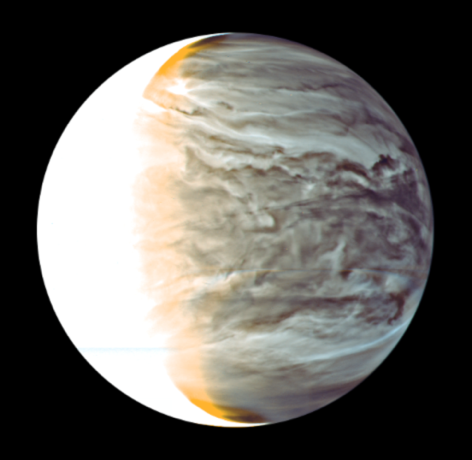
Figure 2a: False color image of cloud patterns on the night side of Venus taken by the Akatsuki's IR2 camera. Thicker clouds are expressed as darker because thick clouds hamper infrared lights coming from the lower layer of the atmosphere. (c) PLANET-C Project Team
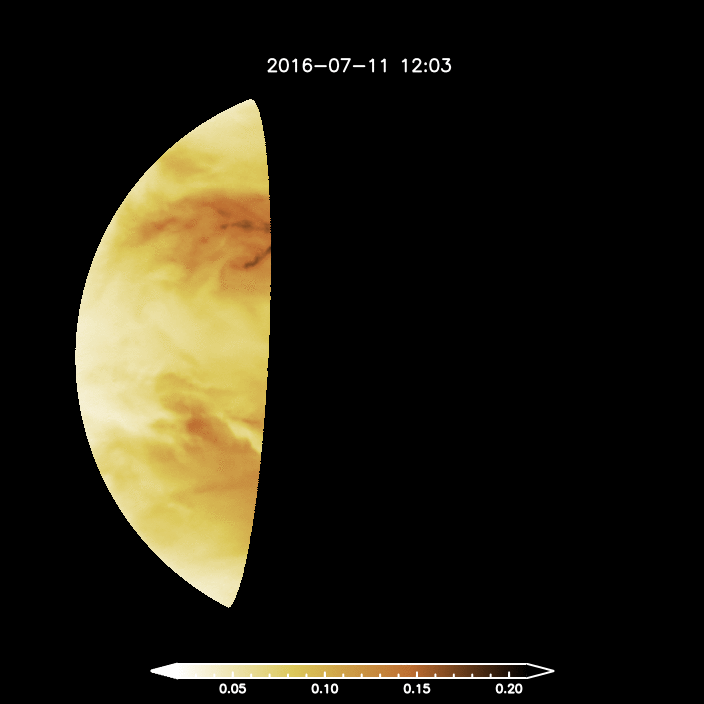
Figure 2b: Pseudo-color images showing two-hourly data acquired by the Akatsuki's IR2 camera. (c) PLANET-C Project Team
Similar observations were previously made by the Venus Express orbiter of the European Space Agency and Galileo spacecraft of the U.S. National Aeronautics and Space Administration, but they provided only limited data of the planet's low-latitude zones. From these observations, scientists speculated that wind speeds at lower-to-middle cloud altitudes are horizontally uniform and have few temporal variations.
A research team led by Takeshi Horinouchi (Hokkaido University) analyzed the data collected by Akatsuki between March and August 2016. The team employed a cloud-tracking method they recently developed to deduce horizontal distributions of winds based on data from Akatsuki.
Deriving the wind speed based on images taken by the IR2 camera in July 2016, the researchers noticed a feature previously unseen at any altitude: the wind speed around the rotational axis peaks near the equator. Since the wind speed maximum occurs near the equator, the research team has named the feature as the equatorial jet. The team also found that the equatorial jet existed at least two months. On the other hand, in March that year, the wind velocities in the same latitude zones were rather slow - thus there was no jet.
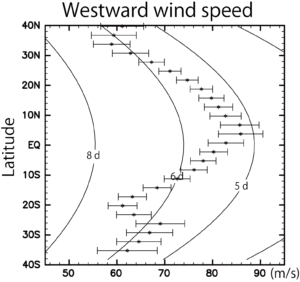
Figure 3: Westward wind speed obtained from the IR2 observations on July 11-12, 2016; longitudinally averaged winds are shown with respect to latitude. The wind speed peaks at low latitude indicating the jet. (c) PLANET-C Project Team
The findings showed for the first time that wind velocities can be markedly high forming a jet near the equator, which has never been found not only in the scantily observed lower to middle cloud layers but also in the more-extensively studied high layers.
"Our study uncovered that wind velocities in the lower-to-middle cloud layer have temporal and spatial variabilities much greater than previously thought," says Takeshi Horinouchi. "Although it remains unclear why such an equatorial jet appears, the mechanisms that could cause it are limited and related to various theories about superrotation. So, further study of the Akatsuki data should help glean useful knowledge not only about local jets but also would help address superrotation theories."

